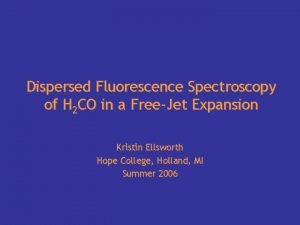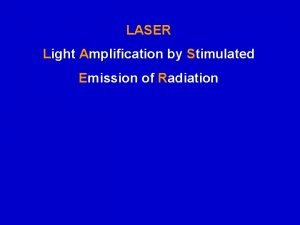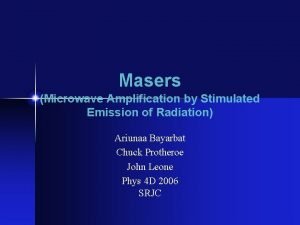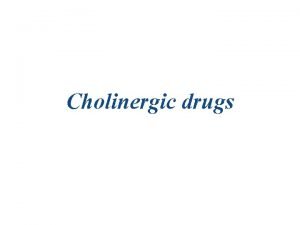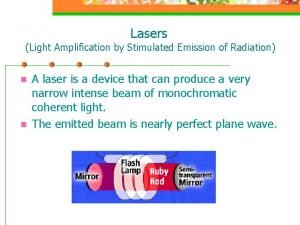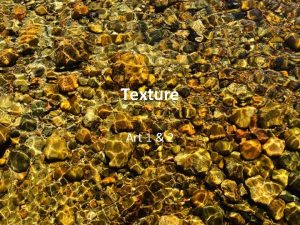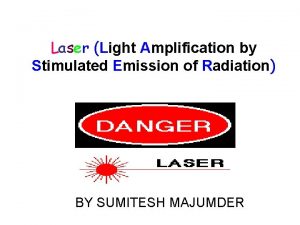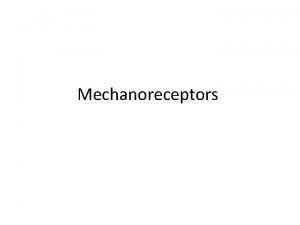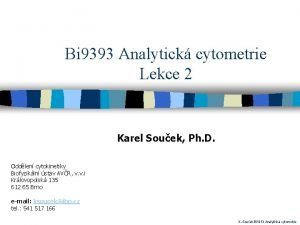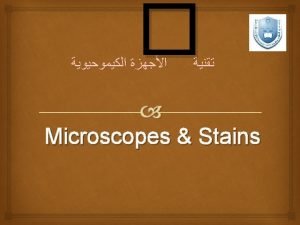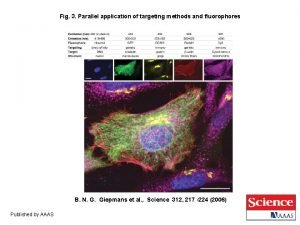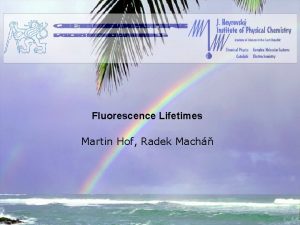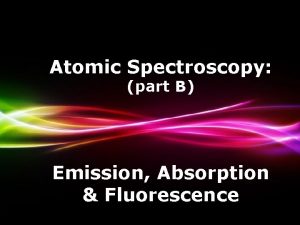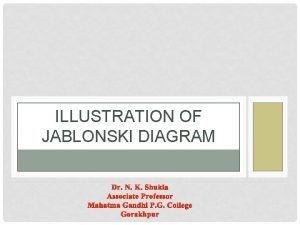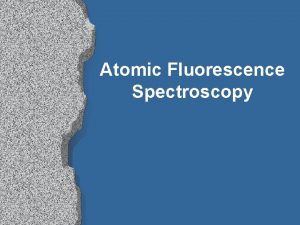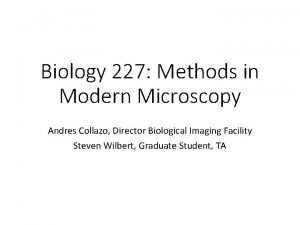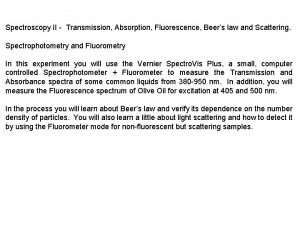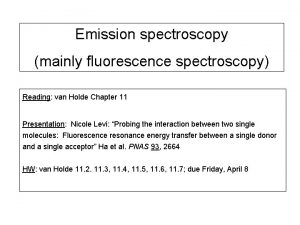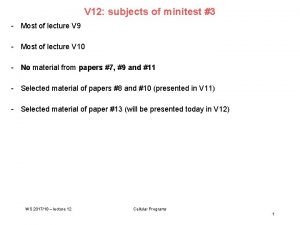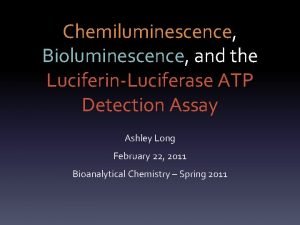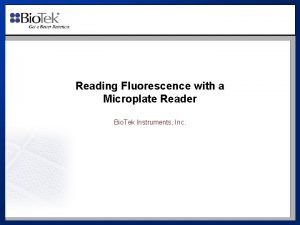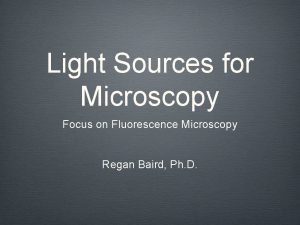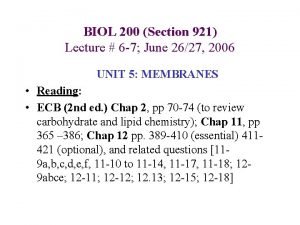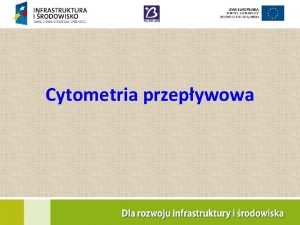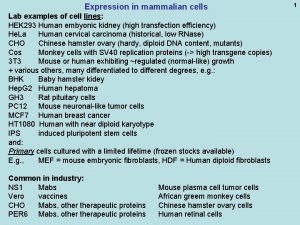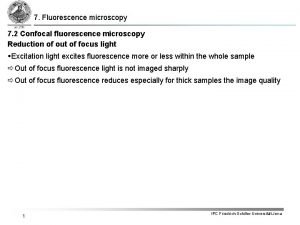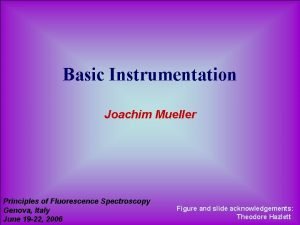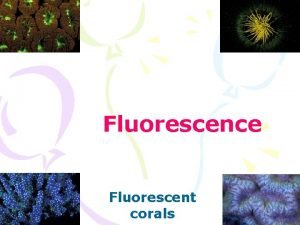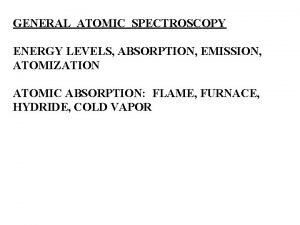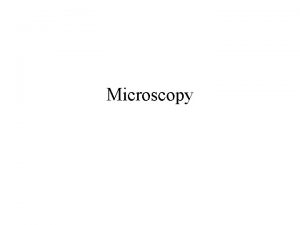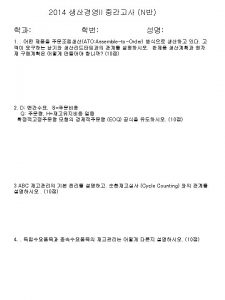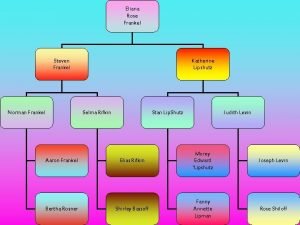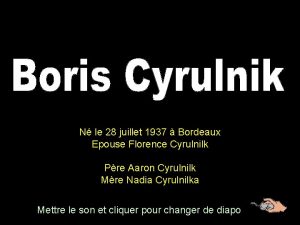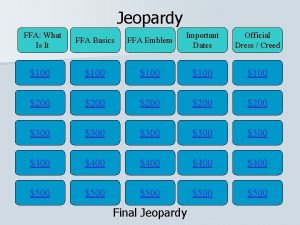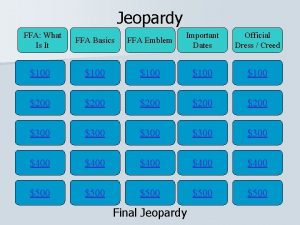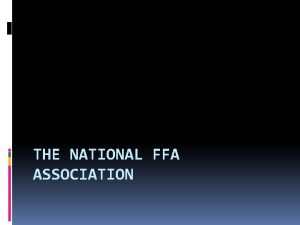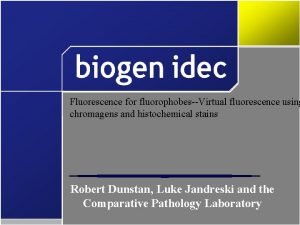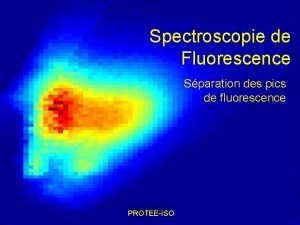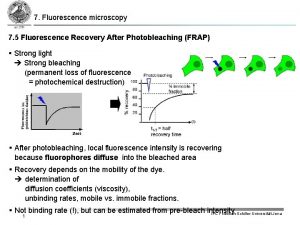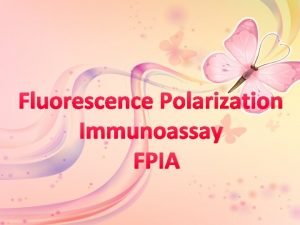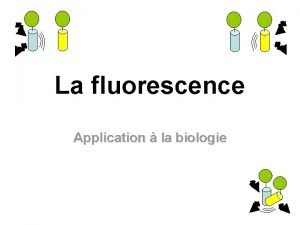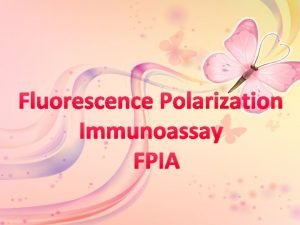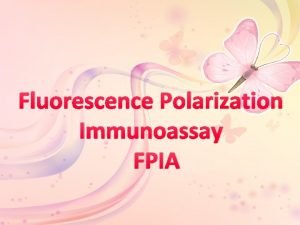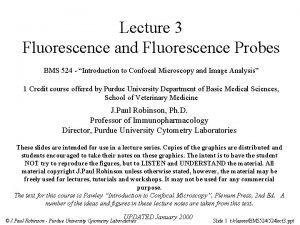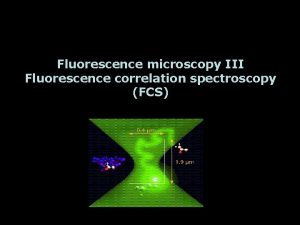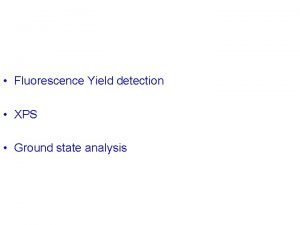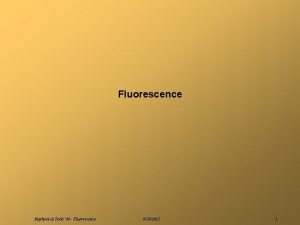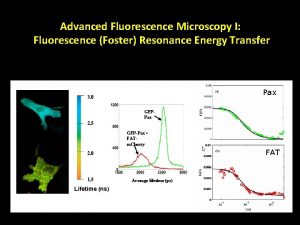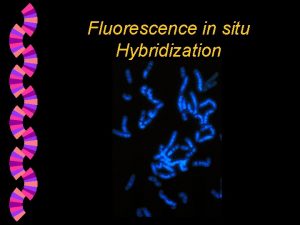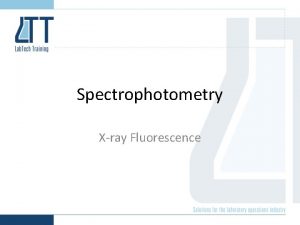FFA Dr Aaron Ng FFA Principles Fluorescence Stimulated









































- Slides: 41

FFA Dr Aaron Ng

FFA Principles • Fluorescence – Stimulated by light of shorter wavelength – Emission of light of longer wavelength • Flurescein – Excitation peak 490 nm – Emit light of about 530 nm

FFA Principles: Filters

5 Phases of Angiogram 1. Choroidal (Prearterial): 9 -15 sec

5 Phases of Angiogram 2. Arterial phase: 1 sec after choroidal phase

5 Phases of Angiogram 3. Arteriovenous (capillary) phase: early venous laminar flow

5 Phases of Angiogram 4 a. Venous phase: Laminar venous flow

5 Phases of Angiogram 4 b. Venous phase – complete filling • Max perifoveal capillary filling – 20 -25 sec • First pass of fluorescein circulation – 30 sec

5 Phases of Angiogram 5. Late (recirculation) phase • Absent after 10 min

Timing of FFA phases • • • Arm to retina (ONH): Posterior ciliary artery Choroidal flush, cilio-retinal artery Retinal arterial phase Capillary transition phase Early venous/lamellar/a-v phase Venous phase Late venous phase Late phase 7 -12 s 9 s 10 -12 s 13 s 14 -15 s 16 -17 s 18 -20 s 5 -15 min

Foveal dark appearance - Foveal avascular zone - High density of xanthophyll at the fovea - Foveal RPE larger and rich in melanin and lipofuscin

Causes of hyperfluorescence 1. 2. 3. 4. 5. 6. Autofluorescence Pseudofluorescence RPE window defect Dye pooling Dye leaking Tissue staining-disc, drusen, chorioretinal scar

Autofluorescence Optic disc drusen

Autofluorescence Lipofuscin

Autofluorescence Angioid streaks

RPE window defect Atrophic ARMD

Dye pooling Subretinal - CSCR

Dye pooling Sub-RPE - PED

Dye leaking Proliferative DR Cystoid Macula Oedema

Late staining

Causes for hypofluorescence • Masking of retinal fluorescence – Pre-retinal lesions block all fluorescence – Deeper retinal lesions e. g. intraretinal haemorrhages and hard exudates block only capillary fluorescence

Pre-retinal lesions Blockage to all fluorescence

Intraretinal lesions Hard exudates Intraretinal haemorrhages

Causes for hypofluorescence • Masking of background choroidal fluorescence – Conditions that block retinal fluorescence – Conditions that block only choroidal • Sub-retinal or sub. RPE lesions • Increased RPE density • Choroidal lesions • Filling defects – Vascular occlusions – Loss of vascular bed (myopic degen, choroidaeraemia)

Increased RPE density CHRPE

Choroidal naevus

Filling defects Capillary drop – out in DR (vascular occlusion) Choroidaeraemia (loss of vascular bed)

CNVM subtypes

Classic

Atypical classic

Occult

Minimally classic

Indocyanine Green Angiography • Advantages over FFA – Study of choroidal vasculature otherwise prevented in FFA due to RPE blockage – Near-infrared light utilised penetrates melanin, xanthophylls, exudates and subretinal blood – Infrared is scattered less cf visible light, thus suitable in eyes with media opacities – 98% ICG molecules bound to protein, thus remaining in the blood vessels

ICGA Principles • Infrared excitation (805 nm) • Infrared emission (835 nm)

Phases of ICGA • Early phase (first 60 sec post injection) – choroidal arteries • Early mid phase (1 -3 min) – choroidal veins and retinal vessels • Late mid phase (3 -15 min) – choroidal vessels facing but retinal vessels are still visible • Late phase (14 -45 min) – hypofluorescent choroidal vessels and gradual fading of diffuse hyperfluorescence

Causes for hyperfluorescence • “Window defect” • Retinal or choroidal vessel leakage • Abnormal retinal or choroidal vessels

Causes for hypofluorescence • Blockage – Pigment, blood, fibrosis, infiltrate, exudate, serous fluid – PED are predominantly hypofluorescent on ICGA as cf FFA • Filling defect – Vascular occlusion – Loss of choroidal or retinal circulation

Clinical indications • PCV • CSCR • Posterior uveitis (extent of disease involvement) • Breaks in Bruch’s (lacquer cracks, angiod streaks) • Contraindication for FFA

CSCR FFA ICGA

CSCR

PCV
 Principles of fluorescence spectroscopy
Principles of fluorescence spectroscopy Stimulated emission
Stimulated emission Gsis
Gsis Microwave amplification by stimulated emission of radiation
Microwave amplification by stimulated emission of radiation Muscarinic adrenergic receptors
Muscarinic adrenergic receptors Metastable state in laser
Metastable state in laser Invented texture
Invented texture Properties of laser light
Properties of laser light Mechanoreceptors
Mechanoreceptors Fluorescence bandpass filter
Fluorescence bandpass filter Bright field microscopy
Bright field microscopy Flip frap
Flip frap Martin hof
Martin hof Atomic emission spectroscopy ppt
Atomic emission spectroscopy ppt Jablonski diagrams
Jablonski diagrams Atomic fluorescence spectroscopy principle
Atomic fluorescence spectroscopy principle Cold vapor atomic fluorescence spectrometry
Cold vapor atomic fluorescence spectrometry Fluorescence microscopy
Fluorescence microscopy Limitations of the beer lambert law
Limitations of the beer lambert law What is quantum yield
What is quantum yield Fluorescence activated cell sorting
Fluorescence activated cell sorting Chemiluminescence vs fluorescence
Chemiluminescence vs fluorescence Biotek flx800 fluorescence microplate reader
Biotek flx800 fluorescence microplate reader Light sources for fluorescence microscopy
Light sources for fluorescence microscopy Fluorescence recovery after photobleaching
Fluorescence recovery after photobleaching Relative fluorescence unit
Relative fluorescence unit Fluorescence-activated cell sorting (facs)
Fluorescence-activated cell sorting (facs) Fluorescence activated cell sorting
Fluorescence activated cell sorting Confocal fluorescence microscopy
Confocal fluorescence microscopy Principle of fluorescence spectroscopy
Principle of fluorescence spectroscopy Jablonksi diagram
Jablonksi diagram Cold vapor atomic fluorescence spectrometry
Cold vapor atomic fluorescence spectrometry Fluorescence microscope uses
Fluorescence microscope uses Ffa motto meaning
Ffa motto meaning Aaron and hur ministry
Aaron and hur ministry Kelly yeomans
Kelly yeomans Aaron debolt
Aaron debolt Aaron leacock
Aaron leacock Aaron barzilai
Aaron barzilai Aaron grossman md
Aaron grossman md Eliana rose old man
Eliana rose old man Boris cyrulnik nadia cyrulnika
Boris cyrulnik nadia cyrulnika
